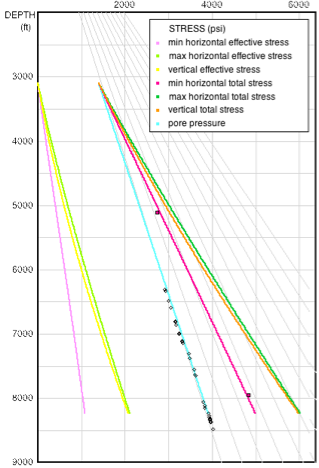STRESSPATH EXAMPLE - STRESS STATE



StressPATH computes horizontal stresses by integrating the elastic stresses across the burial history, from initial conditions at the Earth’s surface to present-day burial depths, using representative elastic modulus functions. Because large changes in elastic moduli typically occur during lithification and diagenesis, the resulting predictions for stress at depth are very different from what would be computed based on present-day elastic properties alone.
In the example shown here, a self-consistent model for in situ stress in a reservoir sand at 8400 ft depth is illustrated. The burial history simulation makes use of elastic modulus functions and strength measurements obtained from laboratory testing of the reservoir rock. The stress state is derived by combining constraints from the burial history modeling, the regional structural setting, the local structural geology, and also information from borehole breakouts, available leak-off tests (pink squares) and pressure data (diamonds).
StressPATH burial history model matched to leak-off tests and pressure data. Horizontal axis is stress measured in psi. Vertical axis is depth measured in feet.
© 2006, HIGGS-PALMER Technologies, LLC

